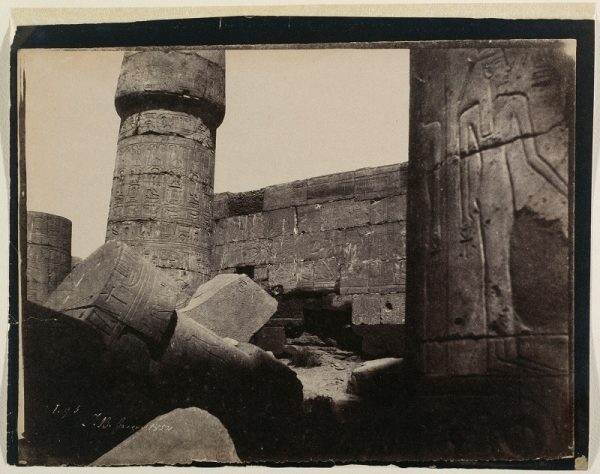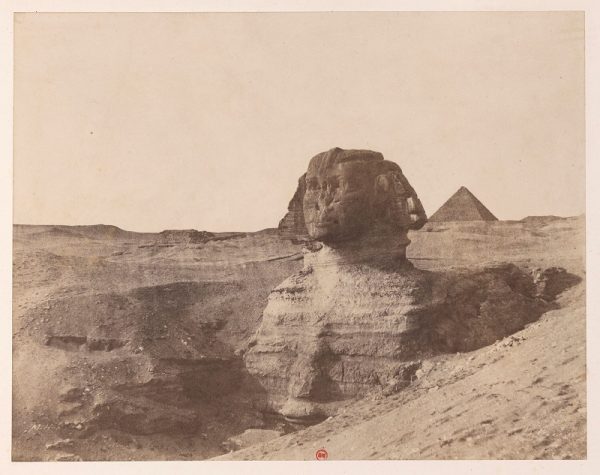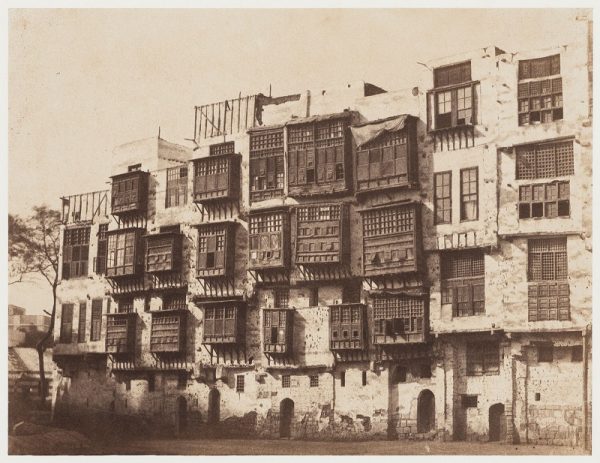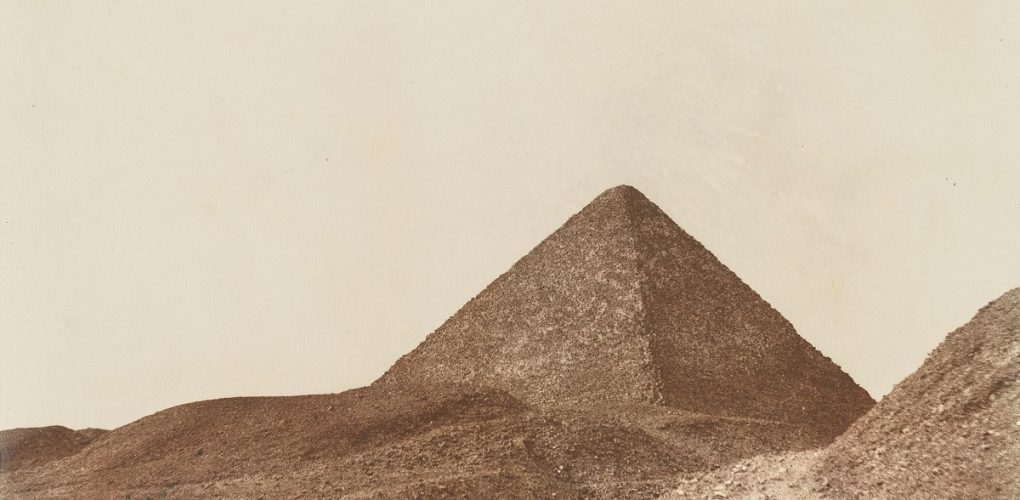https://www.culturalweekly.com/elegant-images-ancient-egypt/
Elegant Images of Ancient Egypt

Ever since its invention in the early 19th century, photography has been a way to describe the world, a form of scientific pursuit as much as artistic expression. And one of the earliest practitioners of photography as science was John Beasley Greene, a young American who learned the new technology in France and put it to use in the Middle East.
The San Francisco Museum of Modern Art has just opened a fine exhibition of 90 of Greene's photographs from Egypt and Algeria. Using waxed-paper negatives rather than cumbersome glass plates, Greene's views of the desert and its ancient monuments are elegant and austere, with a soft and luminous sepia tone to the prints. They were designed to be an archaeological record of a lost civilization, yet they're also an impressive artistic statement.
Greene, who grew up in a wealthy banking family, studied photography under the French master Gustave Le Gray and traveled to Egypt at least twice, in 1853-54 and 1854-55. His plan was to document ancient monuments and their hieroglyphic inscriptions and present the work to a branch of the Institut de France. Back in Paris, he also published portfolios of his photographs for the general public.
His image of the Pyramid of Cheops in Giza (above), from 1853-54, is a model of simplicity. He divides the frame between a cloudless sky above and a landscape of the pyramid rising from rocky hills below. There are no people, no trees, no signs of life, nothing but the undulating hills contrasting with the strict triangular geometry of the pyramid.

John Beasley Greene, Karnak, Hypostyle Hall, Northern Wall, Interior, No. 3, 1854, Musee d'Orsay, Paris.
By contrast, Karnak, Hypostyle Hall, Northern Wall, Interior, No. 3 of 1854 shows a jumble of standing and fallen columns, all inscribed with hieroglyphics, next to a stone wall on the right with a large image of a standing female figure. It's a much more complex composition, with odd angles, bright light, and deep shadows.

John Beasley Greene, Giza, Sphinx, 1853-54, Bibliotheque national de France, Paris.
Most of Greene's images are straightforward, almost scientific in their directness, such as Giza, Sphinx of 1853-54. Like his picture of the Pyramid of Cheops, this portrait of the Sphinx shows the gigantic sculpture rising from a barren landscape, with a deep excavation hole in front and a distant pyramid in the background. The head is badly eroded, while the body is still encased in the rocky soil that preserved it for thousands of years. Again, there are no signs of life anywhere.

John Beasley Greene, View of Houses in Cairo, 1854-55, Canadian Centre for Architecture, Montreal.
A few of the pictures in the show—and some of the most interesting—focus on 19th-century Egypt rather than the country's ancient monuments. Greene's View of Houses in Cairo of 1854-55, for example, features a jumble of multistory buildings with enclosed balconies that almost look like small houses themselves.
Greene traveled to Algeria in 1855-56 to document an archaeological excavation in the French colony. The show includes a few of his Algerian images, including striking views of the hilltop city of Constantine, though they lack the sculptural power of the Egyptian monuments.
Greene was clearly an energetic and talented young man, and if he had taken a full career's worth of photographs of the quality seen in this show, he might have been counted among the early masters of the medium, like his mentor Le Gray. Instead, sadly, he died in Cairo in 1856 at the age of 24.
Signs and Wonders: The Photographs of John Beasley Greene runs through January 5 at the San Francisco Museum of Modern Art, 151 Third Street, San Francisco. The show will be on view at the Art Institute of Chicago from February 8 to May 25, 2020. An extensive catalog is published by DelMonico Books-Prestel.
Top image: John Beasley Greene, Giza, Pyramid of Cheops, or Khufu, 1853-54, National Gallery of Art, Washington, D.C., purchased as a gift of W. Bruce and Delaney H. Lundberg.
-- Sent from my Linux system.

No comments:
Post a Comment